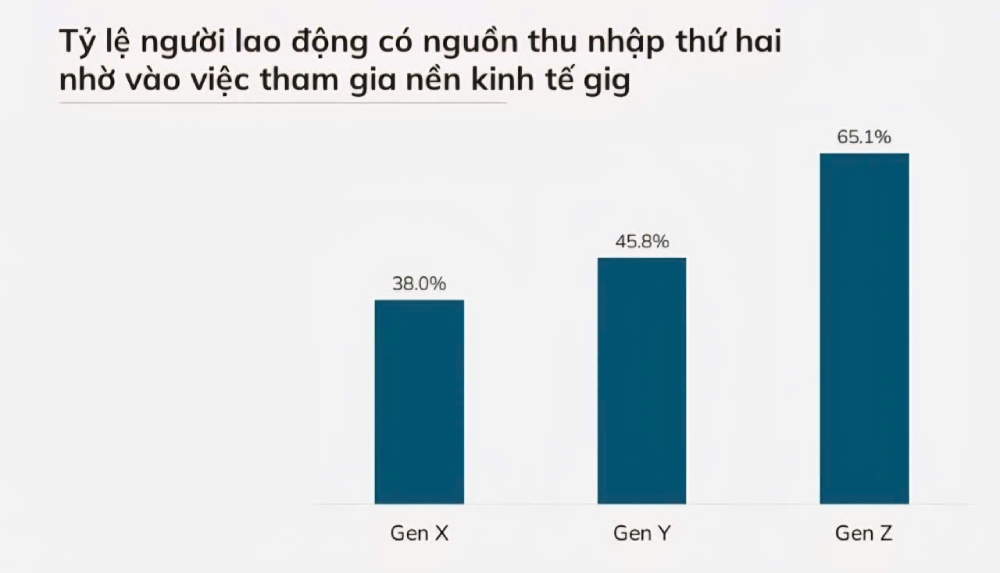According to Anphabe Company, the free-working economy (Gig economy) is becoming a notable trend in Vietnam.
When participating in the Gig economy, one of the notable benefits that workers receive is their income. The results of a recent human resource survey conducted by Anphabe show that among workers with two or more sources of income, up to 55.1% of workers said that their second source of income is due to participating in the Gig economy.
Comparing between generations, if this rate is only 38% for Gen X, for Gen Y and Gen Z, this rate is recorded at 45.8% and 68.1%, respectively. Thus, the younger the younger the rate of workers receiving a second source of income thanks to participating in the Gig economy, the higher it is.

However, according to Anphabe, everything is two-sided and so is participating in the Gig economy. Compared to the group of workers with only passive additional income ( Savings interest, investment interest...), the group of workers with additional income thanks to participating in the Gig economy is likely to face some problems.
First, easily easily irritable and lose calmness with friends and colleagues due to the ability to lose restraint and lack of emotional stability of the working group participating in the Gig economy is about 1.7 times higher than the other working group.
Second, it makes it more difficult to focus on work. Because focusing on completing one's main work seems like a big challenge for the group of workers participating in the Gig economy when the likelihood of losing concentration in this group is 1.9 times higher.
Third, there are more mistakes at work than usual. In addition to difficulty concentrating, employees participating in the Gig economy are also likely to make mistakes, creating errors when working 2.3 times higher than the non-participating group.
Finally, being late in deadlines, not achieving set goals due to difficulty concentrating and easily making mistakes at work, employees participating in the Gig economy are likely to be late in deadlines, thereby leading to the failure to complete the set goals 2.8 times higher than the remaining group.








